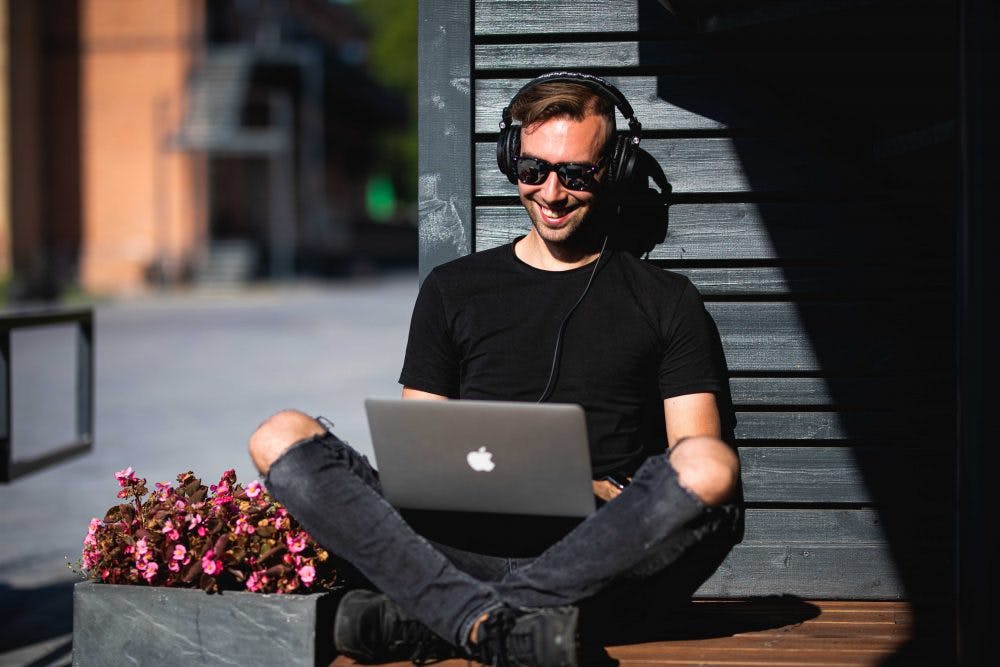Youtube, Spotify, and other music streaming sites are now firmly established as the preferred method of music consumption for listeners.
It’s important to understand how these sites deliver audio so you can give your listeners the best possible experience. You need to be aware of this:
These sites turn down louder songs to keep the playback level consistent across all tracks.
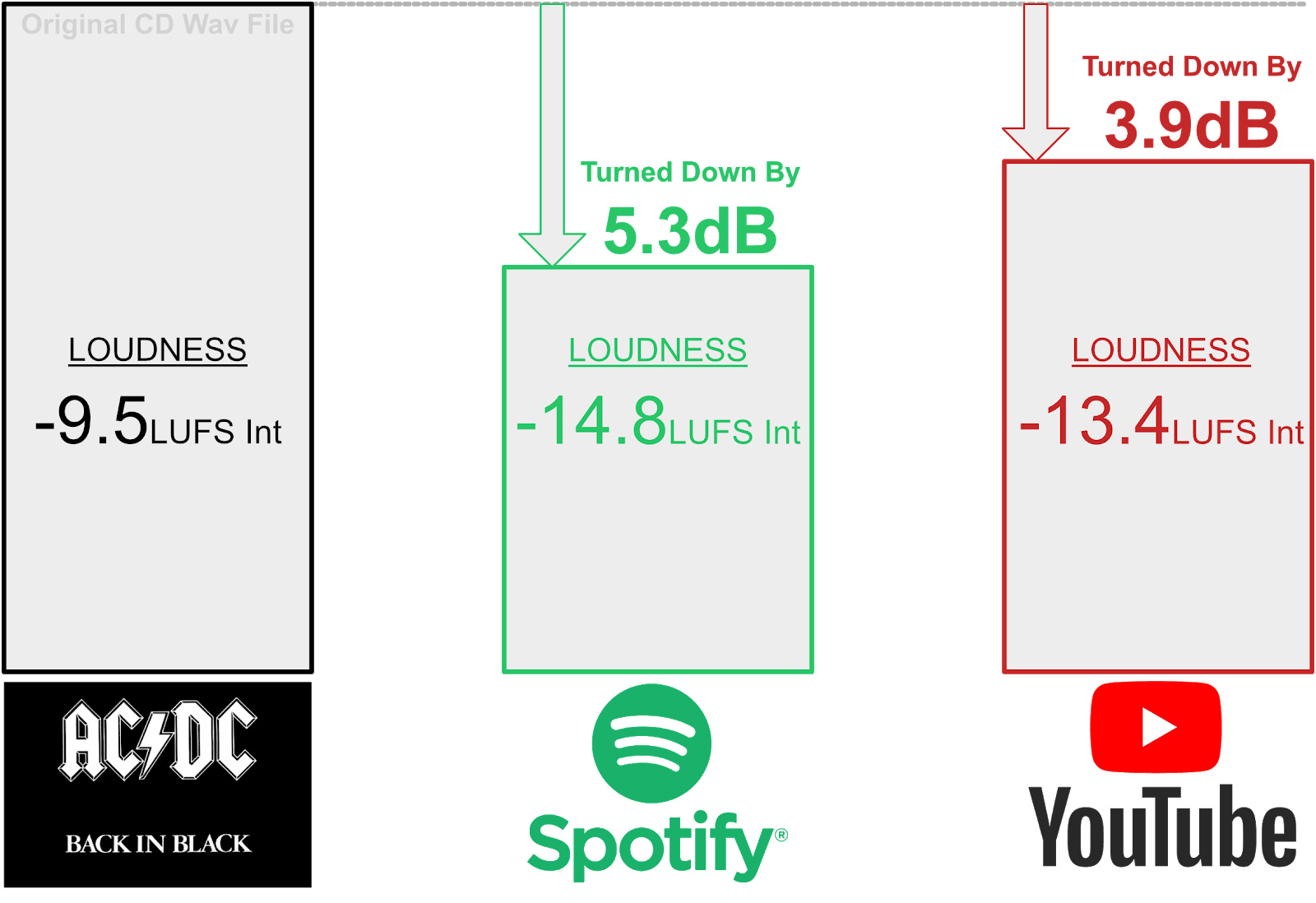
What does this mean for you as an artist, music producer, or audio engineer?
Before audio normalization and streaming sites, most music was compressed and limited to achieve maximum possible loudness. This is because we perceive louder songs to have clearer highs and a fuller low-end than quieter songs.
The unavoidable result of pushing loudness too much is that transients are lost, dynamic range is reduced and distortion muddies the sound.
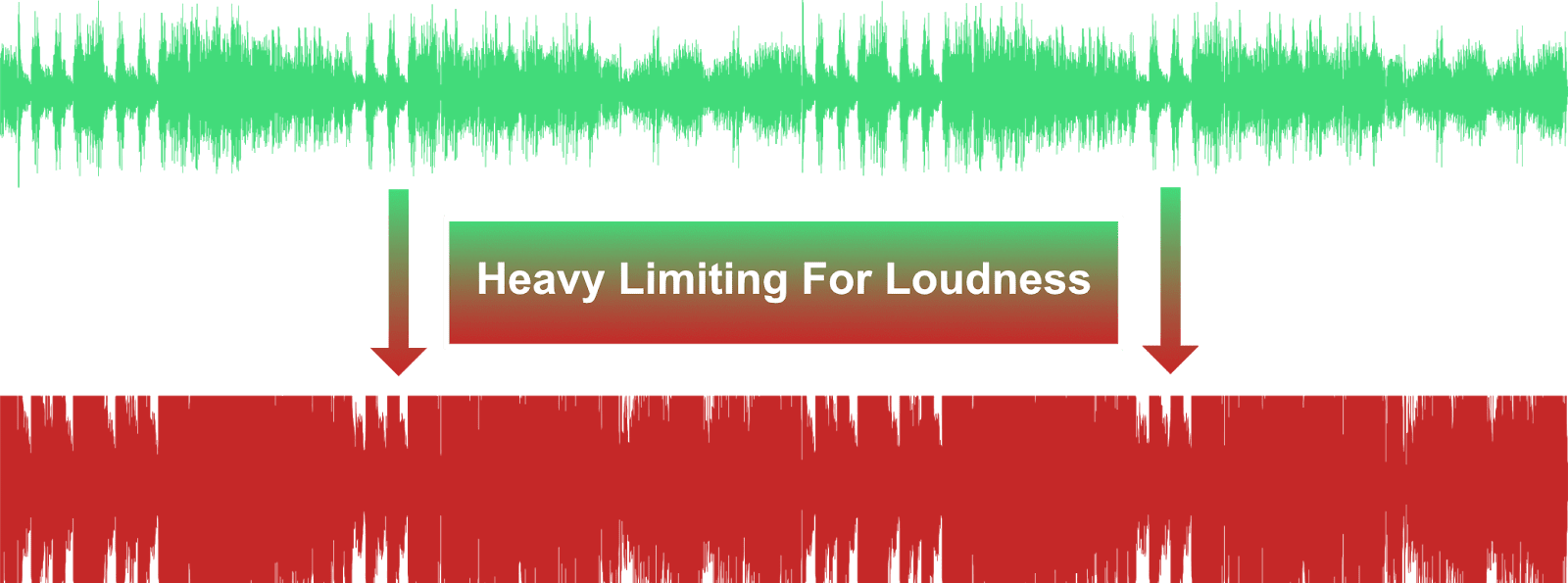
When a loud track and a quiet track are normalized to the same loudness, the tonal balance comparison becomes unbiased. This means the louder track no longer sounds like it has more clarity or a richer bass.
(note: Loudness normalization matches the average loudness of each track. This is different from peak normalization which matches the maximum peak of the audio.)
Now that loudness normalization is the default setting for streaming services, the ‘super-loud’ songs have lost their loudness advantage and the flaws caused by over-limiting are obvious when compared to their more dynamic counterparts.
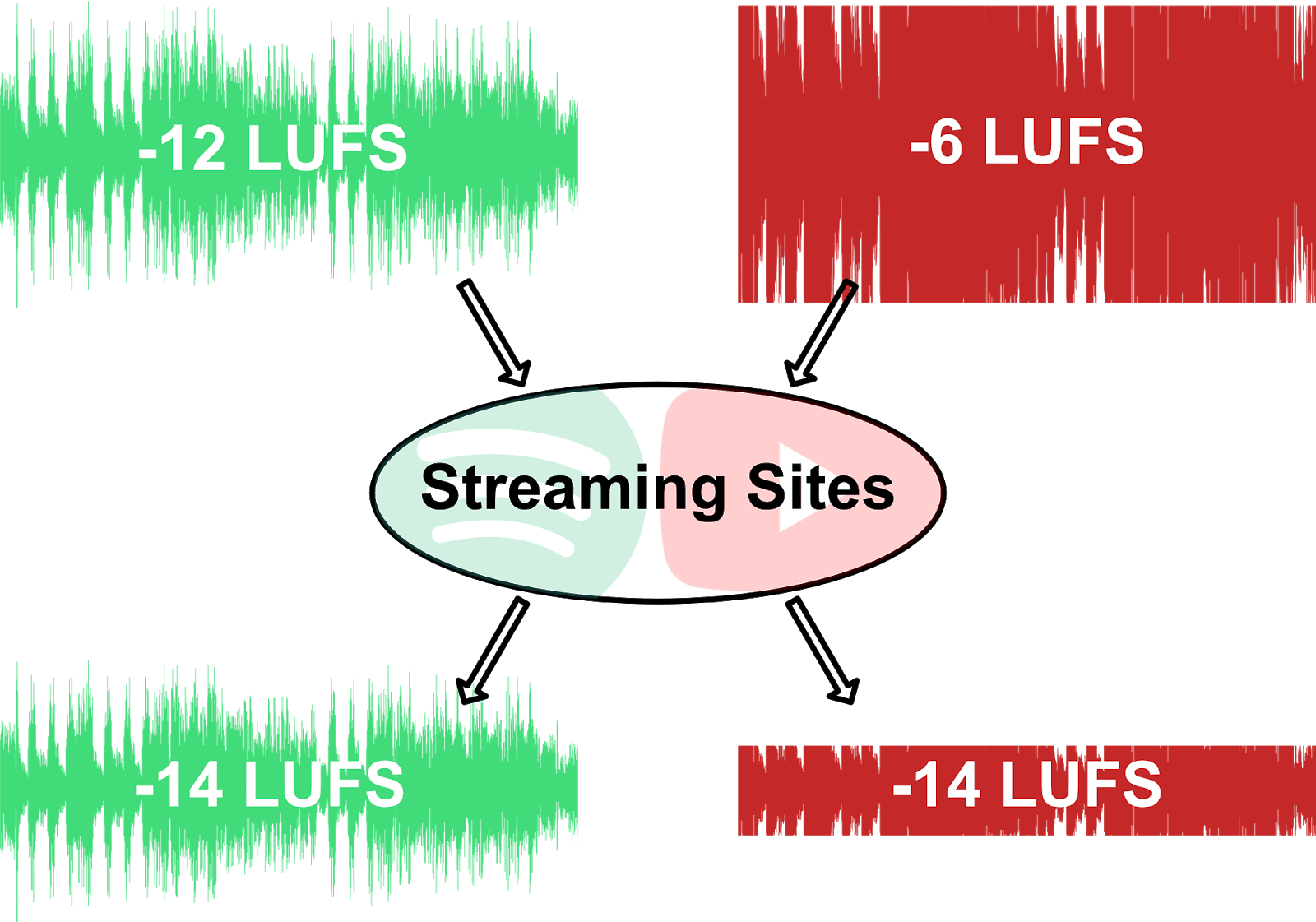
How Should You Respond To This?
This new reality is a win for the quality and integrity of future music. You no longer have to sacrifice the character of your audio by making it as loud as possible to get noticed. Instead, you can create punchy, dynamic and exciting music without worrying that it will sound weak next to other releases.
The being said, you most likely don’t want to master your music quieter than the target playback level of these sites, otherwise the other tracks will have a ‘loudness advantage’ over your song. You want to find the ‘sweet spot’ where the technical details (loudness, peak, dynamic range, and loudness range) are just right for both the music and streaming platform.
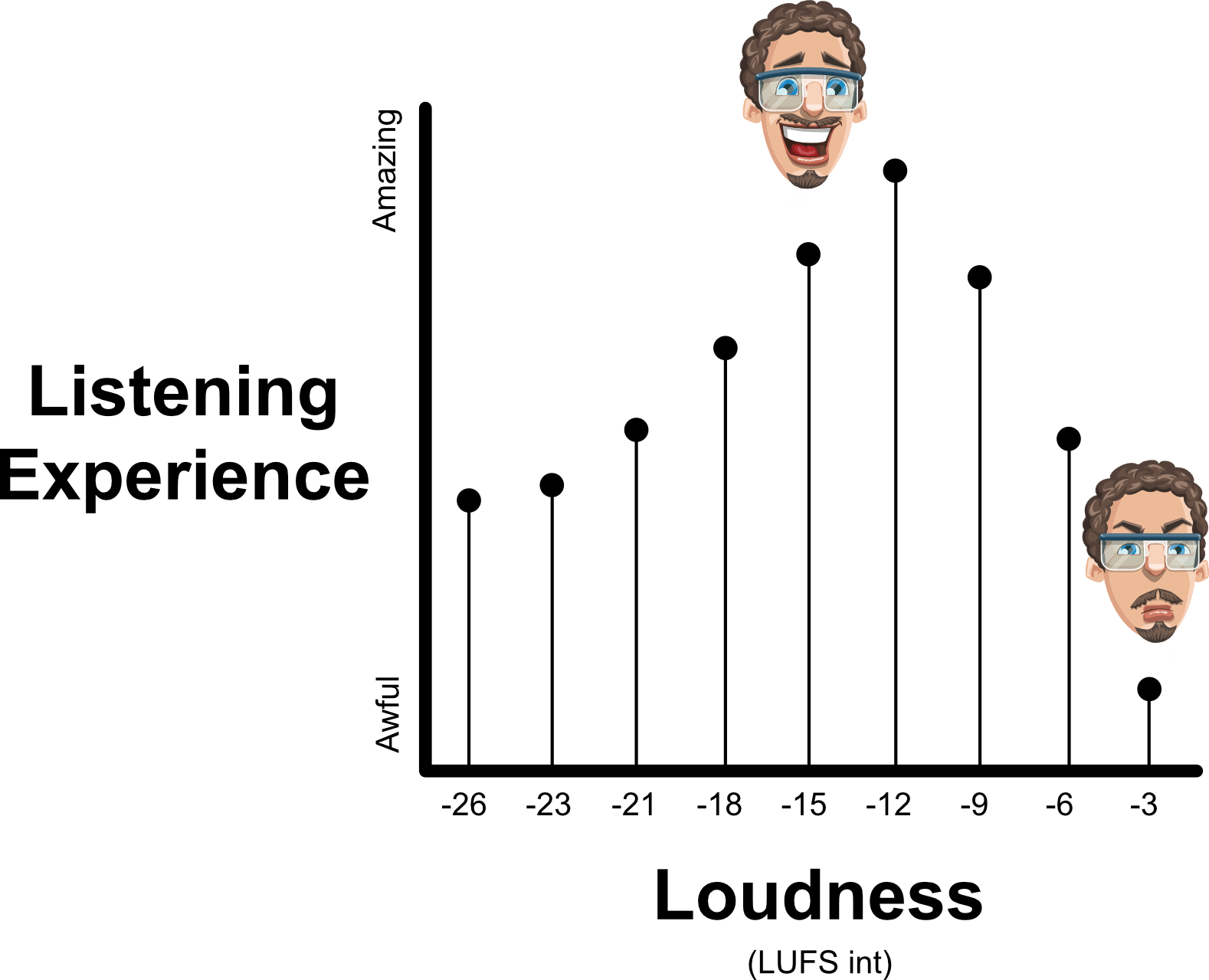
How To Create A ‘Technically’ Excellent Mix
There are two fundamental measurements you want to keep in mind when creating a master for streaming platforms.
1. Loudness
Firstly, you need to know the loudness of your music, measured in LUFS (loudness units full scale). Streaming platforms deliver music at around -12LUFS to -16LUFS integrated, with the majority of songs sitting around -14LUFS.
You don’t have to create a master that is exactly -14.0LUFS, but keep in mind that a loud song measuring -8LUFS will get turned down by at least 4dB. That 4dB reduction is headroom you could have used to create a more open, dynamic and punchy sounding mix, through applying less aggressive compression and limiting.
Shoot for anywhere in the -10LUFS to -16LUFS integrated range to get a great dynamic result. This is where your musical judgement comes into play as each song has it’s loudness sweet spot. Keeping your short-term LUFS quieter than -9LUFS is a great way to avoid any artifacts and distortion introduced by a limiter.
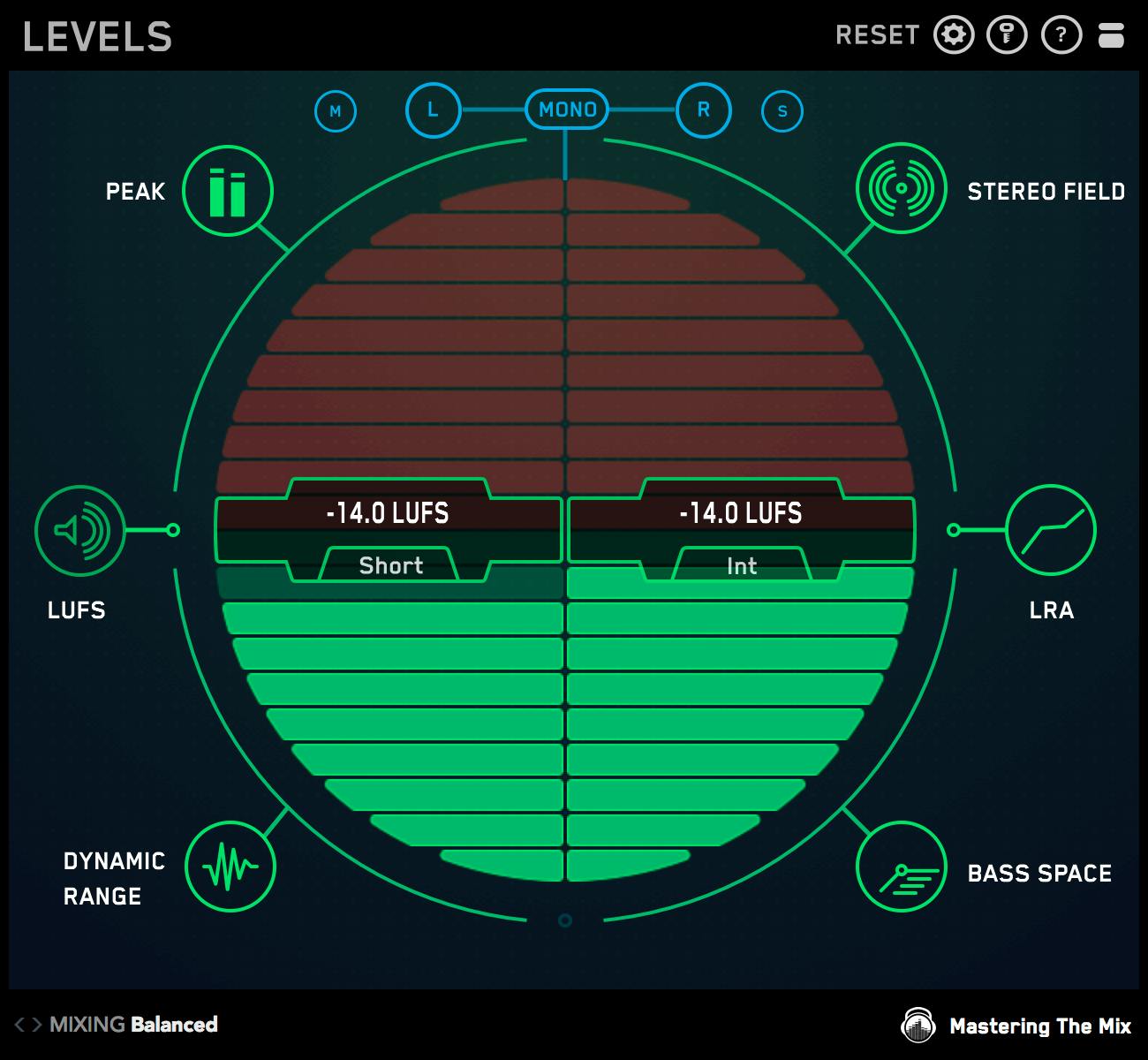
2. Peak
The second fundamental measurement is the dBTP (decibels true peak) of your music. Streaming platforms take your high-quality (large) Wav file and transcode it into a lossy format to allow it to stream faster to your listener’s device.
This transcoding causes the peak to increase. If you’ve not left enough headroom this will introduce digital distortion. The louder the track, the more significant the clipping.

Spotify recommends up to -2dBTP of headroom for louder masters, but if your music is around -12LUFS or quieter, -1dBTP should be enough.

Mastering The Mix created LEVELS to help you keep an eye on all of the important technical details in one easy-to-use plugin.
Grab the free trial for LEVELS here.
“But ‘LOUD’ Is Essential For My ‘Sound’”
Some argue against the advice I’ve given in this post stating that pushing the limiter super-hard is an essential step to achieve the character of their sound.
They are incorrect.
Grit, character, aggression, vibe, excitement and all qualities attributed to ‘loud masters’ can be achieved without pushing the loudness of the whole master. Often, the ‘loudness’ hides the fact that their track is lacking the traits listed above, leading to a disappointing sound on streaming platforms.
If you want the kick and bass to pump aggressively and for the overall sound to have some soft clipping or distortion, introduce that processing on a ‘per-channel’ basis and control it. You’ll end up with a cleaner sound that translates better when it reaches your listener’s ears.
Try This With Your Next Production
Each streaming platform has slightly different playback loudness levels, but they’re all in a similar ballpark. It’s possible to get great results across all streaming platforms using just one bounce.
Next time you’re preparing your final master for streaming platforms, try using LEVELS to help you aim for these technical specifications:
- Peaking around -0.75dBTP to -2dBTP.
- Loudness around -10LUFS to -16LUFS integrated (averaged over the entire song).
- Not louder than -9LUFS short-term at any point in the song (during the loudest section of your song).
If you’re using Sonarworks headphone and speaker correction (as I do on every single project I work on), then be sure to insert LEVELS before the Sonarworks plugin. This means you’ll get the technical readings of the audio you will be bouncing rather than the readings of the Sonarworks adjusted audio for flat monitoring.
I’ve been giving this advice for several years and I can’t even count how many people have messaged me saying how great their songs are now sounding online. I hope you get the same positive result.
